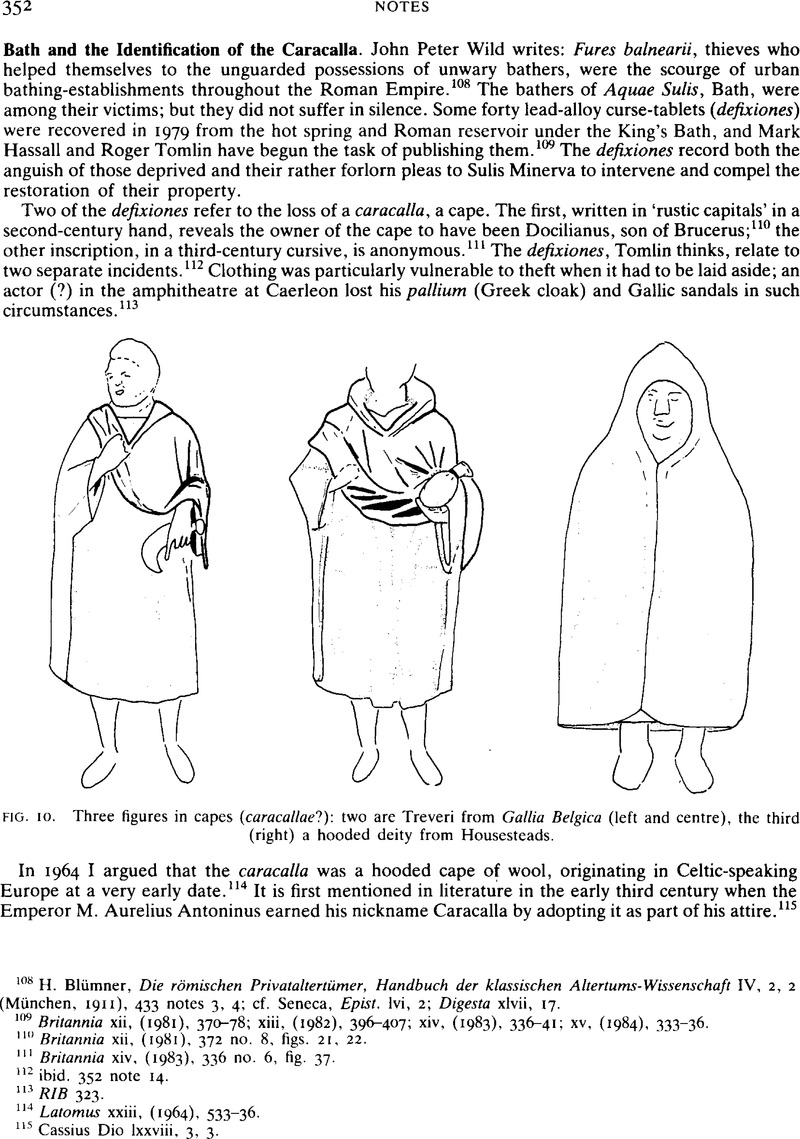Article contents
Bath and the Identification of the Caracalla
Published online by Cambridge University Press: 09 November 2011
Abstract

- Type
- Notes
- Information
- Copyright
- Copyright © John Peter Wild 1986. Exclusive Licence to Publish: The Society for the Promotion of Roman Studies
References
108 Blümner, H., Die römischen Privataltertümer, Handbuch der klassischen Altertums-Wissenschaft IV, 2, 2 (München, 1911), 433Google Scholar notes 3, 4; cf. Seneca, Epist. lvi, 2; Digesta xlvii, 17.
109 Britannia xii, (1981), 370–78; xiii, (1982), 396–407; xiv, (1983, 336–41; xv, (1984), 333–36.
110 Britannia xii, (1981), 372 no. 8, figs. 21, 22.
111 Britannia xiv, (1983), 336 no. 6, fig. 37.
112 ibid. 352 note 14.
113 RIB 323.
114 Latomus xxiii, (1964), 533–36.
115 Cassius Dio lxxviii, 3, 3.
116 Textile History xiii (1982), 20–22; Antiquity xxxvii, (1963), 193–202, pl. XXI.
117 Kolb, F., ‘Die Paenula in der Historia Augusta’, Historia-Augusta Colloquium Bonn 1971 (Bonn, 1974), 81–101.Google Scholar For the paenula see the soldier from Camomile Street, London: Merrifield, R., The Roman City of London, (London, 1965),Google Scholar pl. 95.
118 Bonner Jahrbücher clxviii, (1968), 177–79.
119 ibid. 172 note 18 (the full ensemble of Gallic coat and cape).
120 Britannia xiv, (1983), 352 note 14.
121 On varied handwriting styles in use at one and the same time: Bowman, A.K. and Thomas, J.D., Vindolanda: the Latin Writing Tablets, Britannia Monograph 4, (London, 1983), 70f.Google Scholar
122 Latomus xxiii, (1964), 532.
- 1
- Cited by


